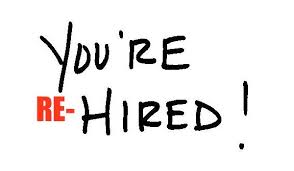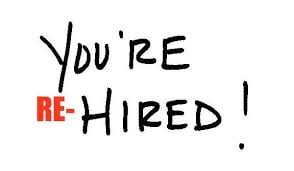If you work for Cardinal Health, it's imperative to consider one of the common threads of a mobile workforce. Many individuals who leave their job are faced with a decision about what to do with their 401(k) account.
Individuals have four choices with the 401(k) account they accrued at a previous employer.
Choice 1: Leave It with Your Previous Employer
For Cardinal Health employees, you may choose to do nothing and leave your account in your previous employer’s 401(k) plan. However, if your account balance is under a certain amount, be aware that your ex-employer may elect to distribute the funds to you.
As an employee of Cardinal Health, there may be reasons to keep your 401(k) with your previous employer —such as investments that are low cost or have limited availability outside of the plan. Other reasons are to maintain certain creditor protections that are unique to qualified retirement plans, or to retain the ability to borrow from it, if the plan allows for such loans to ex-employees.
The primary downside for Cardinal Health employees are that individuals can become disconnected from the old account and pay less attention to the ongoing management of its investments.
Choice 2: Transfer to Your New Employer’s 401(k) Plan
Provided your current Cardinal Health employer’s 401(k) accepts the transfer of assets from a pre-existing 401(k), you may want to consider moving these assets to your new plan.
The primary benefits to transferring are the convenience of consolidating your assets, retaining their strong creditor protections, and keeping them accessible via the plan’s loan feature.
If the new plan has a competitive investment menu, many individuals prefer to transfer their account and make a full break with their former employer.
Featured Video
Articles you may find interesting:
- Corporate Employees: 8 Factors When Choosing a Mutual Fund
- Use of Escrow Accounts: Divorce
- Medicare Open Enrollment for Corporate Employees: Cost Changes in 2024!
- Stages of Retirement for Corporate Employees
- 7 Things to Consider Before Leaving Your Company
- How Are Workers Impacted by Inflation & Rising Interest Rates?
- Lump-Sum vs Annuity and Rising Interest Rates
- Internal Revenue Code Section 409A (Governing Nonqualified Deferred Compensation Plans)
- Corporate Employees: Do NOT Believe These 6 Retirement Myths!
- 401K, Social Security, Pension – How to Maximize Your Options
- Have You Looked at Your 401(k) Plan Recently?
- 11 Questions You Should Ask Yourself When Planning for Retirement
- Corporate Employees: 8 Factors When Choosing a Mutual Fund
- Use of Escrow Accounts: Divorce
- Medicare Open Enrollment for Corporate Employees: Cost Changes in 2024!
- Stages of Retirement for Corporate Employees
- 7 Things to Consider Before Leaving Your Company
- How Are Workers Impacted by Inflation & Rising Interest Rates?
- Lump-Sum vs Annuity and Rising Interest Rates
- Internal Revenue Code Section 409A (Governing Nonqualified Deferred Compensation Plans)
- Corporate Employees: Do NOT Believe These 6 Retirement Myths!
- 401K, Social Security, Pension – How to Maximize Your Options
- Have You Looked at Your 401(k) Plan Recently?
- 11 Questions You Should Ask Yourself When Planning for Retirement
Choice 3: Roll Over Assets to a Traditional Individual Retirement Account (IRA)
Another choice for those in Cardinal Health is to roll assets over into a new or existing traditional IRA. It’s possible that a traditional IRA may provide some investment choices that may not exist in your new 401(k) plan.
The drawback to this approach may be less creditor protection and the loss of access to these funds via a 401(k) loan feature.
Remember, don’t feel rushed into making a decision. You have time to consider your choices and may want to seek professional guidance to answer any questions you may have.
Choice 4: Cash out the account
The last choice for those in Cardinal Health is to simply cash out of the account. However, if you choose to cash out, you may be required to pay ordinary income tax on the balance plus a 10% early withdrawal penalty if you are under age 59½. In addition, employers may hold onto 20% of your account balance to prepay the taxes you’ll owe.
Think carefully before deciding to cash out a retirement plan. Aside from the costs of the early withdrawal penalty, there’s an additional opportunity cost in taking money out of an account that could potentially grow on a tax-deferred basis. For example, taking $10,000 out of a 401(k) instead of rolling over into an account earning an average of 8% in tax-deferred earnings could leave you $100,000 short after 30 years.
- In most circumstances, you must begin taking required minimum distributions from your 401(k) or other defined contribution plan in the year you turn 73. Withdrawals from your 401(k) or other defined contribution plans are taxed as ordinary income, and if taken before age 59½, may be subject to a 10% federal income tax penalty.
FINRA.org, 2022
- Those in Cardinal Health must acknowledge how an unpaid 401(k) loan is deemed a distribution, subject to income taxes and a 10% tax penalty if the account owner is under 59½. If the account owner switches jobs or gets laid off, any outstanding 401(k) loan balance becomes due by the time the person files his or her federal tax return.
- For Cardinal Health employees, in most circumstances, once you reach age 73, you must begin taking required minimum distributions from a Traditional Individual Retirement Account (IRA). Withdrawals from Traditional IRAs are taxed as ordinary income and, if taken before age 59½, may be subject to a 10% federal income tax penalty. You may continue to contribute to a Traditional IRA past age 70½ as long as you meet the earned-income requirement.
- This is a hypothetical example used for illustrative purposes only. It is not representative of any specific investment or combination of investments.
What is the 401(k) plan offered by Cardinal Health?
The 401(k) plan at Cardinal Health is a retirement savings plan that allows employees to save a portion of their earnings on a tax-deferred basis.
How does Cardinal Health match employee contributions to the 401(k) plan?
Cardinal Health offers a matching contribution to the 401(k) plan, where the company matches a percentage of employee contributions up to a certain limit.
What are the eligibility requirements for Cardinal Health's 401(k) plan?
Employees of Cardinal Health are generally eligible to participate in the 401(k) plan after completing a specified period of service, typically 30 days.
Can employees of Cardinal Health change their contribution percentages to the 401(k) plan?
Yes, employees can change their contribution percentages to the Cardinal Health 401(k) plan at any time, subject to certain guidelines.
What investment options are available in Cardinal Health's 401(k) plan?
Cardinal Health's 401(k) plan offers a variety of investment options, including mutual funds, target-date funds, and company stock.
Is there a vesting schedule for Cardinal Health's 401(k) matching contributions?
Yes, Cardinal Health has a vesting schedule for matching contributions, which means employees must work for a certain number of years to fully own the matched funds.
How can employees access their 401(k) account information at Cardinal Health?
Employees can access their 401(k) account information through Cardinal Health's employee portal or by contacting the plan administrator.
What happens to my Cardinal Health 401(k) if I leave the company?
If you leave Cardinal Health, you can choose to leave your 401(k) funds in the plan, roll them over to another retirement account, or withdraw the funds, subject to tax implications.
Are there loan options available through Cardinal Health's 401(k) plan?
Yes, Cardinal Health allows employees to take loans against their 401(k) balance, subject to specific terms and conditions.
What is the maximum contribution limit for Cardinal Health's 401(k) plan?
The maximum contribution limit for Cardinal Health's 401(k) plan is in line with IRS guidelines, which may change annually.
/General/General%204.png?width=1280&height=853&name=General%204.png)



-2.png?width=300&height=200&name=office-builing-main-lobby%20(52)-2.png)











-2.png)








